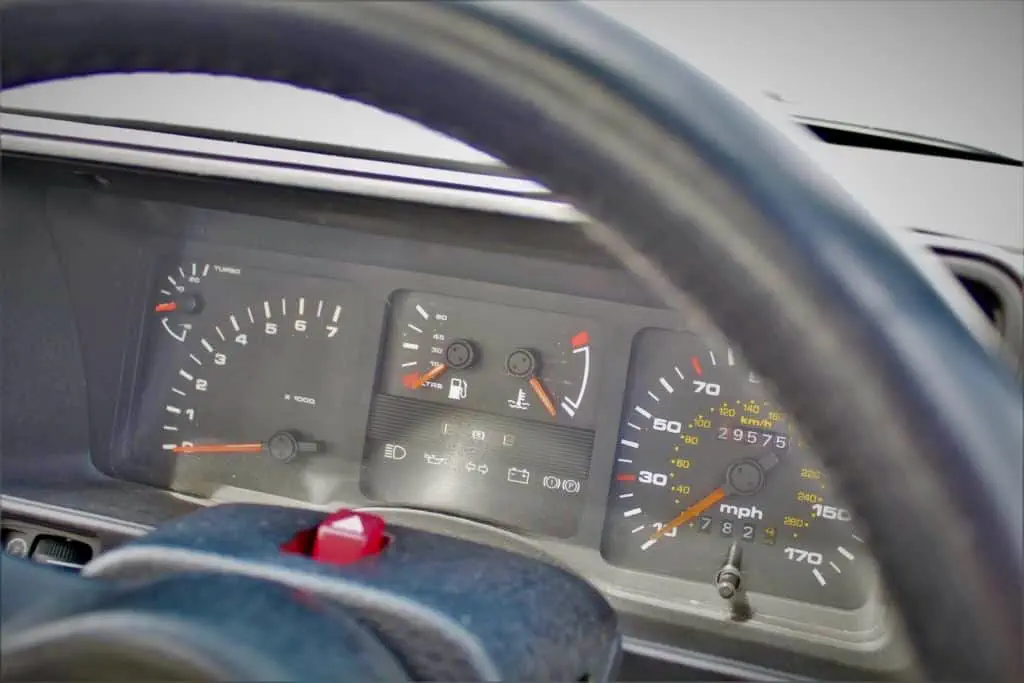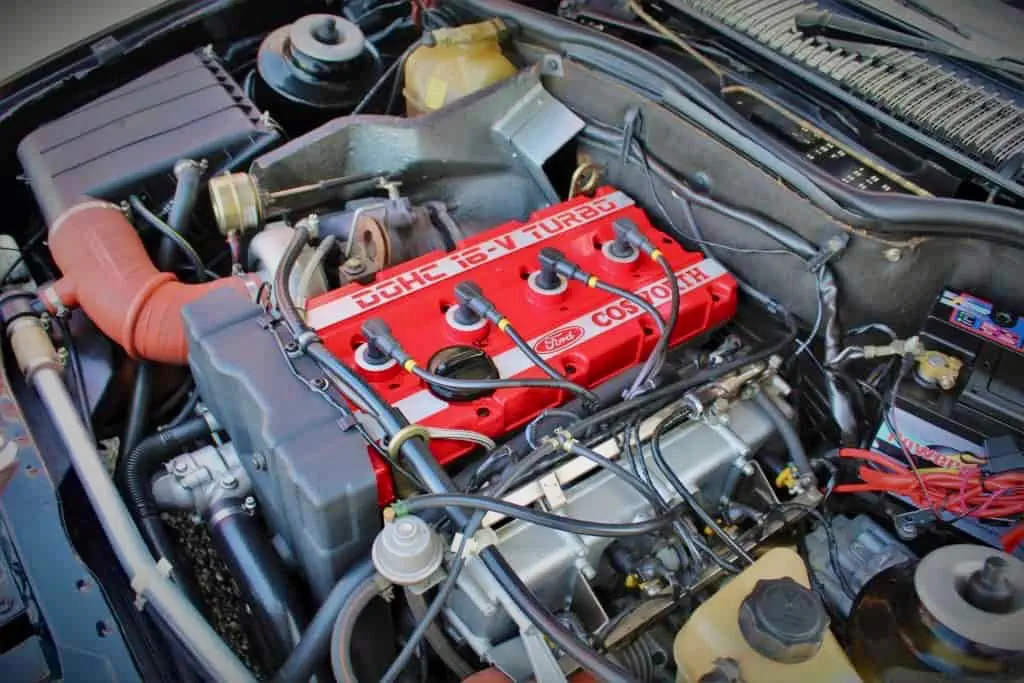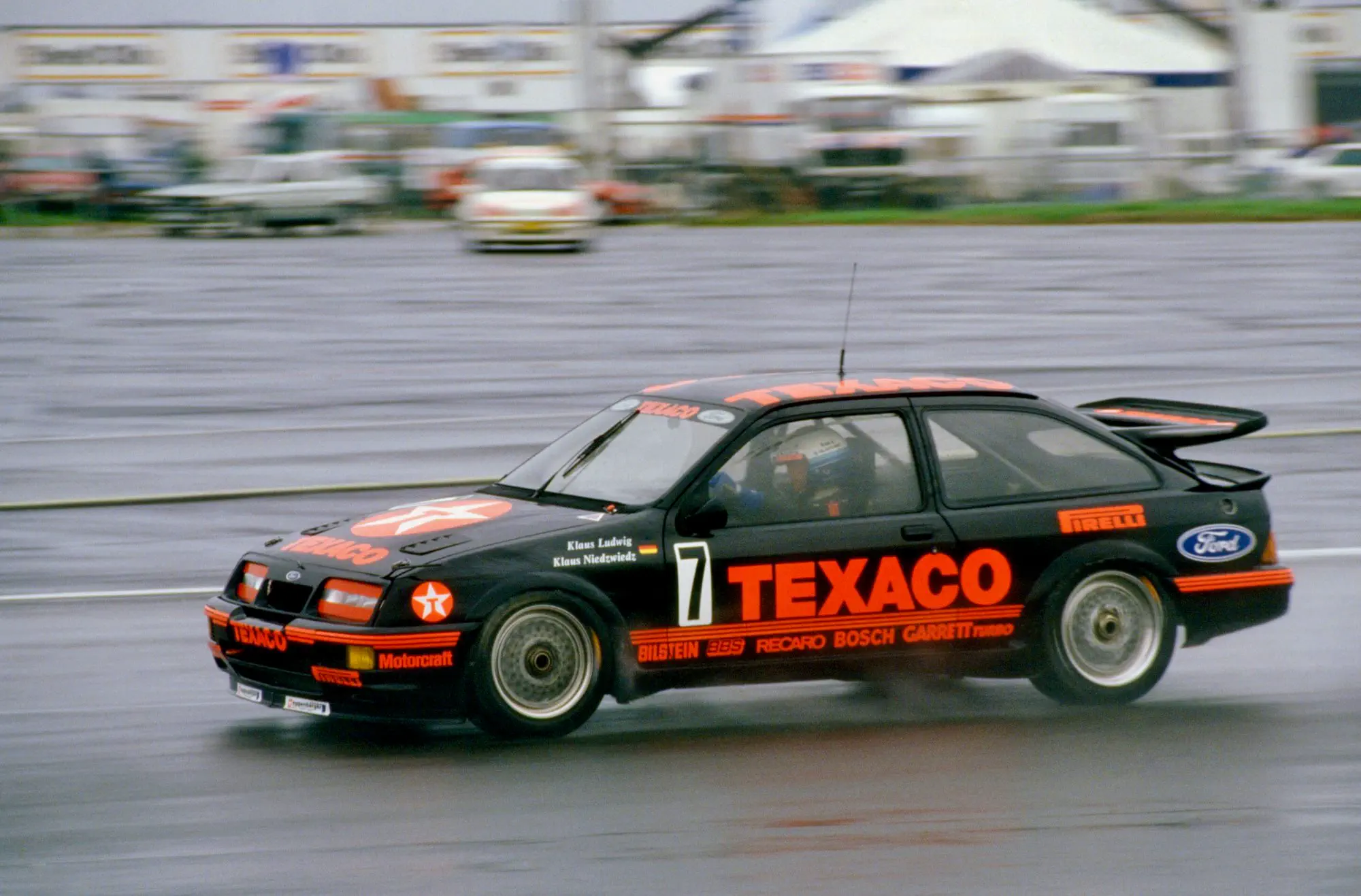The Homologation Special That Mugged a Nation

In the mid-1980s, Ford had a problem. It was made of beige plastic and aerodynamic uncertainty, and it was called the Sierra. Ford's loyal customers, men who had bought Cortinas for two decades, looked at this new "jellymould" design with deep suspicion. It was a car designed by a wind tunnel, and it was failing to win the one place that mattered most: the racetrack. This was a catastrophic failure for a company whose marketing philosophy was "Win on Sunday, sell on Monday." British race fans, the very people who were supposed to be buying Sierras, were instead watching Tom Walkinshaw's thundering V8-powered Rover SD1s and imported BMWs dominate the British Touring Car Championship. Ford wasn't just absent from the podium. They were being convincingly beaten by the sort of car their fathers' generation drove.
So Ford of Britain decided to build a weapon - a racing car for the road, a machine so brutally effective that it would obliterate the competition and save the Sierra's reputation. What they ended up creating was the ultimate working-class hero, a car so potent it became the default choice for an entire generation of criminals and, in a perfect, desperate irony, the police who had to chase them.
The Pub Lunch
The plan, as the legend goes, was hatched over a pub lunch in 1983. Stuart Turner, Ford's new head of Motorsport in Europe, was visiting Cosworth when its director, Keith Duckworth, casually mentioned they were developing a new 16-valve, twin-cam cylinder head for Ford's reliable, if profoundly dull, 2.0-litre Pinto engine. For Turner, this was a lightbulb moment. He saw a path to victory. He proposed turbocharging Duckworth's new engine and building a car around it.
The brief he envisioned was absurd. He needed an engine capable of 500 horsepower for Group A touring car racing. To make it legal, motorsport's governing body required a "homologation run" of 5,000 road-going cars. Turner had to convince Ford's executives to spend a fortune - a plausible £80 million - to build 5,000 high-performance versions of a car that, at the time, few people wanted to buy, all to win a race championship. It was a hard sell to men in suits, but Turner understood something they didn't. Working men saved up for cars that won races. If the Sierra could win, they would buy it.
The "Lotus Cortina" Moment
Turner had to pitch this financially terrifying idea to Ford of Britain's chairman, Sam Toy. The meeting, by all accounts, was not going well. Turner recalled struggling to sell the concept to the men who would have to shift 5,000 of these expensive monsters. Then, in a moment of inspiration, Sam Toy pointed to a photograph on his office wall. It was of Jim Clark, sideways in a Lotus Cortina.
"Will the Cosworth do for the Sierra what the Lotus did for the Cortina?" Toy asked.
"That's exactly what it will do," Turner replied, realising he should have opened with that. The project was greenlit. The parallel was perfect. In the 1960s, Ford had turned a dull family saloon into a racing legend by giving it to Lotus. Now, they would do it again by giving its successor to Cosworth.
A Rep's Car in Battle Armour
What emerged was a masterpiece of function over form. The heart was the Cosworth YBB engine, a 2.0-litre Pinto block topped with Cosworth's 16-valve head and a massive Garrett T3 turbocharger. In road trim, it produced 204 horsepower, which in 1986 meant you could embarrass BMW owners at traffic lights while looking like you sold photocopiers for a living. Everyone knew the engine was built to withstand more than double that in race trim.
Body aerodynamics created its own headache. The standard Sierra, for all its wind tunnel development, generated lift at high speed. This was not ideal for a racing car. The solution was the Cosworth's most infamous feature: that magnificent, absurd, and absolutely necessary "whale tail" rear wing. The styling department was reportedly horrified by it. They said it would frighten off customers. But Turner's engineers, who knew it was the only thing keeping the car on the track, insisted. Function won over form.
At £15,950, the RS Cosworth cost serious money for a Ford. A three-bedroom semi in the Midlands was going for about £30,000. But for working men who'd spent their weekends watching touring car racing, this was their chance to own a piece of it. Here was a car that could match Ferraris in a straight line, yet you could get parts from the local Ford dealer.
The RS500: The Racing Weapon
Ford built its 5,000 "standard" RS Cosworths. But the Group A rules allowed a further 500 "Evolution" models to be built, with even more extreme upgrades. This was the car they really wanted to race.
All 500 cars were sent to Aston Martin Tickford. There, they were converted into the RS500. This was the true weapon. It received a much larger Garrett T04 turbo, a reinforced engine block, a second set of fuel injectors - dormant in the road car, but essential for the race teams - and a modified cooling system. The famous whale tail grew an extra "Gurney flap" lip for even more downforce. On paper, the road car was now rated at 224 horsepower. In reality, it was a 500-horsepower race car sold with a number plate and a warranty, just waiting to be unleashed.
The Payback: Total Domination
The gamble paid off more completely than Ford could have ever dreamed. The Sierra Cosworth, particularly the RS500, annihilated the competition. It won the World Touring Car Championship. It won the Australian Touring Car Championship, including the Bathurst 1000, twice. In Britain, it was unstoppable, winning the BTCC with drivers like Robb Gravett and Andy Rouse. It was said the RS500 won approximately 85% of all Group A races it ever entered. Turner's pub lunch vision had delivered. The Sierra's reputation was saved.
The Unintended Consequence
The car was too good. It became the "everyman's supercar," accessible to working men who'd saved for years. And because it was, fundamentally, a Ford Sierra, it was frighteningly easy to steal. A new, unwanted customer base emerged.
Ram-raiders discovered that reversing through plate glass at speed, loading up, and vanishing created an unbridgeable performance gap. Building societies across Essex were hit in coordinated attacks. By the time police responded in their Vauxhall Astras, the Cosworth was doing 140 mph on the M25. The chase was over before it started.
Several forces took drastic action. Northumbria Police bought five RS Cosworths in 1990. Sussex Police acquired three. The taxpayer was now funding both sides of a high-speed arms race, with identical cars.
The Vauxhall Lotus Carlton may have terrified Parliament, but the Sierra Cosworth terrified the insurance industry. It became the most desirable, most dominant, and most stolen car in Britain, all simultaneously. Insurance companies walked away. Premiums that had been manageable became impossible, then unavailable. Men who'd scraped together fifteen thousands found themselves making payments on cars they couldn't legally drive. Some sold at losses. Others parked them and waited.
The £600,000 Legacy
Those cars that rotted in garages because no insurer would touch them are now worth fortunes. A pristine 1987 RS500 sold at auction in 2023 for £596,250. A fittingly absurd price for a car that was, for a time, uninsurable at any price.




